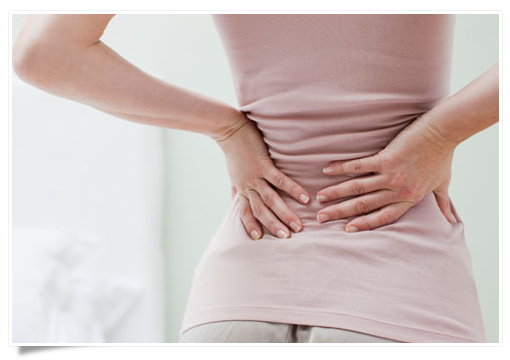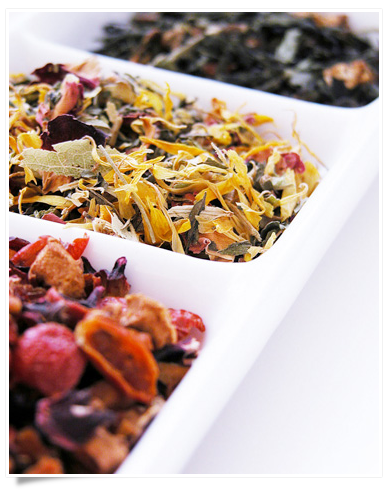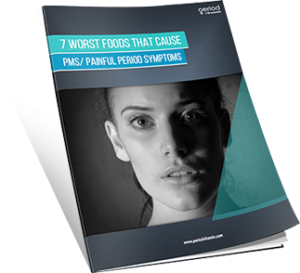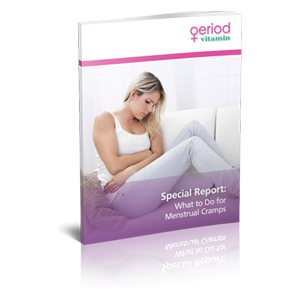A large number of women suffer from period back pain that can run from very mild to severe or debilitating.
Why does this happen just before your period or why do you have back pain during your period?
Does the pain continue after the period ends?
What causes this pain and how can it be remedied or treated?
 During a women’s menstrual cycle, she can experience either or both abdominal cramping and back pain. This condition of abdominal cramping and/or back pain is medically termed Dysmenorrhea.
During a women’s menstrual cycle, she can experience either or both abdominal cramping and back pain. This condition of abdominal cramping and/or back pain is medically termed Dysmenorrhea.
This medical term describes the muscle cramps that occur during a woman’s menstrual cycle. Dysmenorrhea is the cause of back pain – upper, lower or one side – during a woman’s period.
It can be very debilitating pain but it is not a serious condition and it passes within a few days of starting. Serious or not it is a very painful condition and every woman suffering from this back pain is looking for a treatment, remedy or cure.
A woman’s menstrual cycle consists of various stages including:
Pre Menstrual: A timeframe of about 2-3 weeks prior to the shedding of the uterine lining.
Stage 1: Follicular stage – the stage in which excessive amounts of estrogen are produced and the uterine lining thickens.
Stage 2: Luteal stage – the stage in which the production of estrogen drops off and progesterone takes off. This is the stage in which ovulation occurs.
Period: Shedding of uterine lining, blood and excess tissue.
Post Menstrual: A timeframe of about 1-2 weeks after bleeding stops.
Symptoms During Menstrual Cycle
In addition to this back pain due to the menstrual cycle there are several other symptoms that may appear at the same time. These might include the abdominal cramps we mentioned previously, headaches, bloating, fatigue, nausea, mood swings and digestive issues. All of these other symptoms might be present along with period back pain.
Causes of Menstrual Back Pain
There could be three reasons for back pain during the woman’s menstrual cycle. This includes:
Dysmenorrhea: When the uterus contracts sharply the result is cramping whether it be in the abdomen, upper thighs or back. This is one of the leading causes of back pain during the menstrual cycle. Stress, lack of exercise, and anxiety can cause dysmenorrhea. There is even a chance that you can have back pain but no period if taking birth control pills that prevent ovulation. This back pain starts low and can move to any other part of the back and can even cause Sciatica if it is really severe.
Secondary Dysmenorrhea can occur due to other conditions than just the normal menstrual cycle. Some of these conditions include pelvic inflammations, fibroids, IUDs made of copper, STDs and ovarian cysts. Back pain caused by these secondary conditions or increased by them can be much more extreme than otherwise.
Endometriosis: Another major cause of back pain associated with a woman’s menstrual cycle is endometriosis. This is an abnormal reproductive condition where cells grow outside the uterus at a rapid rate and cause extreme abdominal and back pain. Usually this pain begins a couple of days before a woman’s cycle begins. With this condition, the severity of the back pain increases every year a woman ages and the condition is not taken care of. Eventually the pain will become debilitating and the woman is not likely to be able to function or at times even get out of bed. When endometriosis gets this bad a surgical solution such as a hysterectomy is required.
Contraction of the Womb: This is the third potential cause of mild to severe period back pain. This occurs during the period stage of the menstrual cycle when excess uterine lining that builds up during the Follicular Stage is pushed out through the vagina along with menstrual blood and water. This is a process that acts very much like contractions during birth labor. The pain is caused by the intense use of muscles that are not normally used at all and this leads to both back and abdomen cramping. Prostaglandins are produced in this time period as well and either add to or independently cause mild to severe back pain by causing both uterine contractions and back muscle spasms.
Remedies and Treatments: The question then is how to make this period back pain go away and how can you get quick relief.
Over the counter pain medications including NSAIDs (Non Steroidal Anti Inflammatory Drugs) and Tylenol are good for the less severe cases of menstrual cycle associated back pain. Prescription analgesics (pain medication) might be needed for the extreme or severe period back pain.
Natural and Herbal Remedies:
- Devil’s claw is also popular as it is a root found in Africa and it is used to reduce inflammation and muscle spasms. The usual dose it 800 mg taken in capsule form three times per day. However Devil’s claw should not be used if you are taking any form of blood thinners.
- Arnica is an herb that is available in gel, lotion or pills. All of these forms will relieve muscle pain. The pills are simply placed under the tongue until dissolved.
- Camomile Tea helps to calm muscle spasm. You can have as much as 3 cups per day or 3 capsules per day.
- Pineapple extract is an anti-inflammatory that will ease pain and can be taken several times a day. There are other anti-inflammatory herbs as well that can be infused into tea including valerian, Jamaican dogwood and St. John’s Wort.
- Horsetail is an herb that will ease pain but also will build up the connective soft tissues and alleviate any lower back pain. It is also infused and taken as a tea several times per day.
- Burdock is an herb that will kill the pain if taken a few times a day.
- An herb that does not act as a pain remedy but rather will strengthen the back muscles and thereby help in preventing the spasms and back pain to begin with is yarrow juice taken in its fresh form.
- Meadowsweet tea taken three or more times per day can be combined with a muscle rub made from cramp bark and lobelia will relax the back muscles and thereby reduce back pain. Native Americans regularly used cramp bark both for menstrual pain and back pain within the menstrual cycle. The key is the anti-spasmodic and muscle relaxer properties of the herbs.
- Instead of a regular heating pad or pack you can make your own heat pack from mustard seeds whether white or black seeds. It is important not to leave a mustard pack on your back for over ten minutes.
- Both the ancient Greeks and the Native Americans used willow bark for pain relief.
- Peppermint and regular mint are used in OTC (over the counter) rubs and gels for back pain. Mint contains natural properties for relaxing the muscles.
- Rosemary Tea is used by Hispanics to deal with pain and particularly pain from inflammations.
Vitamins and Supplements:
A clinical study on nutrition and pain during the menstrual cycle found that “The effects of nutrition regarding maintaining a proper reproductive cycle are profound. Sub- optimal levels of certain nutrients can exacerbate symptoms of PMS, PMDD, and Primary Dysmenorrhea.
Vital Nutrients such as: B vitamins, Essential Fatty Acids, calcium, Iron, and Magnesium help control symptoms associated with the late luteal phase. Magnesium is responsible for the phosphorylization of B vitamins. Subclinical deficiency indirectly affects symptoms of PMS, PMDD, and Dysmenorrhea due to its direct effect of B vitamin bioavailability. Supplementation of a B complex supplement significantly decreased both the intensity and the duration of menstrual cramps and severity of back pain.
Magnesium is responsible in assisting nerve conduction, muscle function and bioavailability of B vitamins. Deficiencies can activate the cascade of inflammation. It acts as inhibitor to pro-inflammatory modulators, PGE2 and PGF2 alpha. Without optimal levels, systemic inflammation and pain can occur. Essential Fatty Acids represent another nutritional source for managing PMS and PMDD. Inappropriate amounts of EFAs, omega 3 FAs, in conjunction with dietary intake of improper fat (high omega 6 FAs) will influence inflammatory modulators PGE2 alpha and PGF2 alpha to be produced.
This will increase the Primary Dysmenorrhea and create more pain. Therefore adequate levels of fatty acids are essential.” (Wallace J. Treatment for Painful Menses: A Nutritional and Botanical Approach. American Journal of Natural Medicine, Vol. 5, No. December 1998: 21-29)
Exercise and Other Help for Back Pain:
There are many things you can do that do not involve medications, herbs or supplements of any kind. Exercise, stress reduction techniques, yoga and just doing positive things that help you to relax and relieve any emotional and physical tension. Warm heating pads or patches or a warm bath is often a great source of pain relief. Massage is another way to relieve both stress and back pain. Acupuncture is another alternative remedy that seems to be very effective for every level of back pain from moderate to severe. Take advantage of these tips to deal with period back pain.




